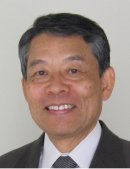|
Plenary Lecture
Influence of Aluminum on Health and Disease

Associate Professor Shunsuke Meshitsuka
Division of Integrative Bioscience
Institute of Regenerative Medicine and Biofunction
Graduate School of Medical Science
Tottori University, 86 Nishi-machi, Yonago 683-8503,
Japan
E-mail:
mesh@med.tottori-u.ac.jp
Abstract: Aluminum is not
an essential element but is rather
toxic and the need to protect
themselves from aluminum toxicity
is crucial for living organisms.
Aluminum is the third abundant
element and the most abundant
metal in the earth’s crust,
therefore exposure to aluminum is
inevitable in daily life. It was
shown that the rate of excretion
of aluminum in the urine was
assumed to have a limiting value.
As a result, an excess intake of
aluminum indicated that the
aluminum content in the body
remained high for several days
after the absorption of aluminum
from the intestine.
It is widely known that
accumulation of aluminum in the
body has been linked to disease
conditions. The toxic effects of
aluminum to neuronal cells were
examined to show apoptotic cell
death via endoplasmic reticulum
stress, implicating an influence
of aluminum on the gene
expression. Also, it was shown
that astrocyte-neuron interaction
was important in the process of
toxic effects in the central
nervous system. Renin was the only
positively identified up-regulated
gene determined by DNA sequencing.
The up-regulation of renin was
confirmed by RT-PCR and Western
blotting experiments in the dose
dependent treatments and the time
course observation in mice. The
up-regulation of the renin
expression by aluminum is a strong
indication of the influence of
aluminum on the
renin-angiotensin-aldosterone-system,
resulting in the induction of
essential hypertension.
Brief Biography of the Speaker:
Shunsuke Meshitsuka graduated from
Waseda University in 1970, and got
his Ph.D. from the Faculty of
Science of the University of Tokyo
in 1977, and got D. Med. from
Tottori University Faculty of
Medicine in 1987. He got a
position of a researcher in Sagami
Chemical Research Center in 1972.
He moved to Tottori University
Medical School as an assistant
professor in 1976. After working
in the Fox Chase Cancer Center in
Philadelphia as a postdoctoral
fellow he became an associate
professor in 1995. He was an
invited researcher of Riken Genome
Science Research Center, Yokohama
from 2004 to 2006, and also was a
visiting researcher of Osaka
University Institute for Protein
Research from 1981 to 2010. His
main research area is inorganic
biochemistry and the structure of
related biological molecules.
|